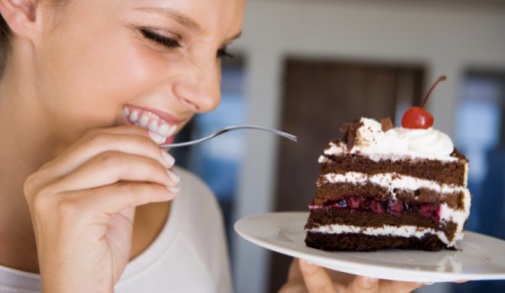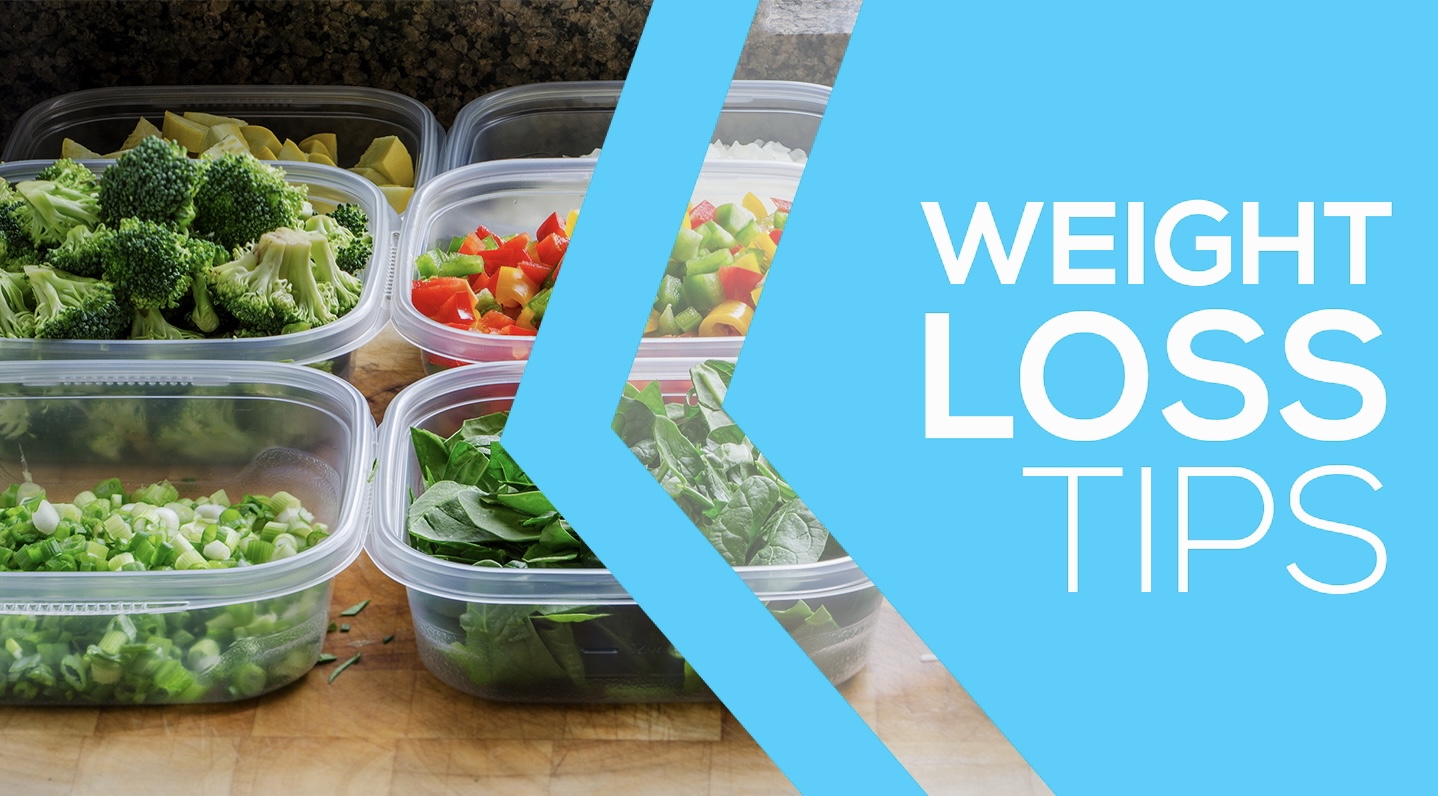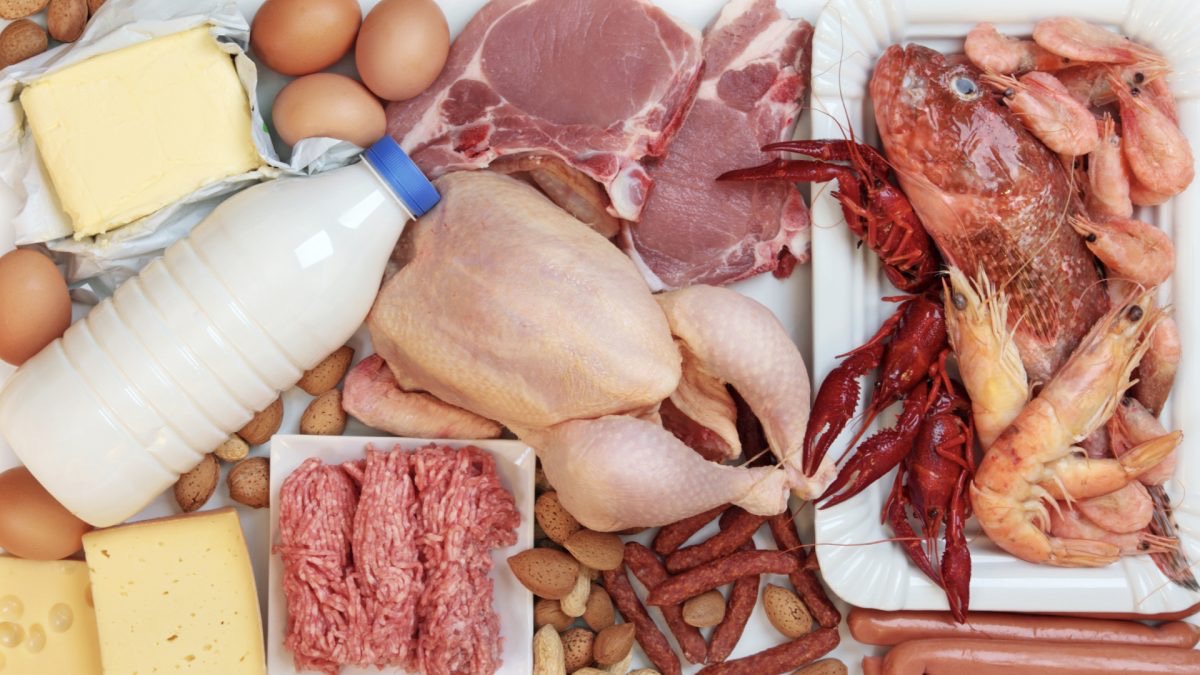Understanding Pre Diabetes!
The Threat Of Pre Diabetes!
Even when I started my pioneering obesity clinic in Pune four decades ago, it was clear that we were fast becoming the world capital of diabetes and heart disease!
But the threat of a condition called pre diabetes was not as commonly recognised then as it is today.
Currently the commonest fear with which young people are approaching me to help them get over their weight and health issues is the threat of going from pre diabetes to full blown diabetes!
What exactly is pre diabetes?
Pre diabetes is a condition in which the blood sugar levels are raised above normal but are still lower than the diagnostic levels of diabetes.
The HbA1c or the glycated haemoglobin levels lie between 5.7 and 6.4 per cent, just below the diagnostic levels of diabetes, 6.5 per cent and above.
Pre diabetes is a condition that is part of the metabolic syndrome, characterised by obesity, especially abdominal obesity, hypertension, raised levels of triglycerides and LDL, the bad cholesterol and lowered levels of HDL, the good cholesterol.
LDL cholesterol causes blocks in the coronary arteries which leads to heart disease and myocardial infarctions or heart attacks and HDL cholesterol cleanses the coronary arteries off these blocks and protects us from heart disease.
Pre diabetes is considered the stepping stone towards developing diabetes and some of the complications of diabetes can affect the pre diabetics too.
Pre diabetes is diagnosed by checking the the blood sugar fasting and post prandial levels, the glucose tolerance test, the HbA1c, the blood insulin levels and the lipid profile. Abdominal obesity and hypertension confirm the presence of pre diabetes.
Pre diabetes may not have any recognisable signs and symptoms, that makes it even more difficult to diagnose.
But some people may have the same symptoms as those of diabetes, like excessive thirst, increased urination and fatigue and they could indicate that you aught to rule out pre diabetes and diabetes.
If you are suffering from obesity, especially abdominal obesity, have family history of diabetes, have a sedentary lifestyle, you should check your blood pressure, blood sugars, blood insulin, HbA1c and lipid profile, to screen for pre diabetes.
The causes of developing pre diabetes could be family history of diabetes, sedentary lifestyle, stress, older age, ladies who have had history of gestational diabetes and have had high birth weight (more than 9 pound) babies.
When carbohydrates are digested, they are absorbed in blood as sugar and the blood sugar levels increase.
In response to this the pancreas releases insulin in blood and insulin helps transport the sugar to various tissues of the body and under its influence, the cells of the tissues take up sugar from the blood and utilise it for the energy that they require for their functions.
Under the influence of insulin the liver also stores more sugar for providing energy to the body later.
This lowers the blood sugar and the blood insulin levels.
But when you eat too much sweets or sugary food regularly, the pancreas is forced to produce more insulin to bring down the blood sugar to normal.
After a while the cells of the various tissues stop responding adequately to the insulin and do not absorb sugar efficiently.
This means the cells of the tissues develop insulin resistance.
This causes both, the blood sugar and the blood insulin levels to stay high.
This raised blood level of insulin is called hyperinsulinemia.
When the capacity of the liver and the muscle cells to store sugar is over, the excess blood sugar is stored in the fat cells of various fat depots in the body and our weight increases, gradually leading to obesity.
Diagnostic levels of pre diabetes:
Fasting Blood Sugar Levels: Between 110 to 125 (WHO) or 100 to 125 (American Diabetes Association)
Sugar Tolerance Test: Between 140 and 199 mg/dL two hours after taking standardised 75 gm glucose solution.
Glycated Haemoglobin or HbA1c levels between 5.7 to 6.4 per cent.
Levels above these are diagnostic of diabetes.
Reversing Pre Diabetes:
The earlier that the condition of pre diabetes is diagnosed, the greater are the chances that it can be reversed.
How to reverse Pre Diabetes:
Healthy Eating: Focus on a balanced diet rich in whole grains, fruits, vegetables, lean proteins, and healthy fats. Limiting processed foods and sugary beverages is crucial.
Regular Physical Activity: Engage in at least 150 minutes of moderate-intensity exercise per week, such as brisk walking, cycling, or swimming.
Weight Management: Losing even a small percentage of body weight can significantly reduce the risk of developing diabetes.
Regular Monitoring: Keep track of blood sugar levels and have regular check ups with your physician or endocrinologist.
Keeping your consumption of sweets low, so it helps keep your blood insulin from rising unnecessarily high.
If you have uncontrollable craving for sweets, eat ample fruits through the day. It will take away the abnormal craving for eating sweets and also add valuable nutrition to your food.
Staying away from sweets with determination for a fortnight, to allow the taste buds on your tongue to get adjusted to not eating them. Once they are retrained, you won’t be able to eat as much sweets anyway.
So, to reverse your pre diabetes, you need to develop healthy food habits, eat nutritionally balanced food, exercise regularly, reduce your weight, keep stress low and sleep well.
And don’t wait to start all these things till you catch diabetes!
If you start now, you could most likely prevent the development of insulin resistance and pre diabetes!
Also read ‘Sweets, Obesity And Diabetes’, ‘Insulin Resistance And Diabetes’, ‘Dangers Of Eating Too Much Sweets’ and ‘Preventing Diabetes’ on this website.
प्री डायबीटिस!
प्री डायबीटिस म्हणजे नेमके काय आहे,
तो कसा निर्माण होतो,
आणि तो कसा टाळता येईल किंवा कसा रिव्हर्स करता येईल!
***
माझ्या प्रॅक्टिस च्या सुरुवातीलाच हे स्पष्ट होते की आपण वेगाने डायबीटिस आणि हृदयविकार ह्या आजारांमध्ये जगभरात आघाडी घेत आहोत.
पण त्या वेळेस प्री डायबीटिस ह्या कंडिशन चे महत्व लोकांना अजूनही तितकेसे जाणवले नव्हते.
पण आज मात्र माझ्याकडे येणारे अनेक लोक प्री डायबीटिस असल्याचे समजल्यामुळे वजनाची ट्रीटमेंट घेण्यासाठी माझ्याकडे येत आहेत.
लट्ठपणाची फारशी भीती न वाटणारे काही लोक निदान प्री डायबीटिस च्या भीतीने तरी जागृत होत आहेत हे ही चांगले आहे.
***
पण प्री डायबीटिस म्हणजे नेमकी काय कंडिशन आहे?
प्री डायबीटिस ह्या कंडिशन मध्ये ब्लड शुगर्स नॉर्मल पेक्षा अधिक पण डायबीटिक लेव्हल्स पेक्षा कमी असतात.
प्री डायबीटिस ही कंडिशन मेटबॉलिक सिंड्रोम चा एक भाग असते आणि ह्यात लठ्ठपणा, विशेषतः पोटात अधिक फॅट असते म्हणजेच पोट सुटलेले असते, ब्लड प्रेशर वाढलेले असते, रक्तातील शुगर, इन्सुलिन, ट्रायग्लिसराईड्स आणि एल डी एल कोलेस्टेरॉल च्या लेव्हल्स वाढलेल्या असतात आणि हृदयाला सुरक्षित ठेवणाऱ्या एच डी एल कोलेस्टेरॉल च्या लेव्हल्स कमी झालेल्या असतात.
ह्या पैकी ट्रायग्लिसराईड्स आणि एल डी एल कोलेस्टेरॉल च्या लेव्हल्स वाढण्या मुळे हृदयाच्या करोनरी आर्टरीज् मध्ये ब्लॉकेजेस होऊन हृदयविकार निर्माण होतो तर हे ब्लॉकेजेस काढून घेऊन करोनरी आर्टरीज् आणि पर्यायाने हृदयाला सुरक्षित ठेवण्याचे काम एच डी एल कोलेस्टेरॉल करते.
प्री डायबीटिस ही डायबीटिस पहिली पायरी असते आणि ती पुढे जाऊन डायबीटिस मध्ये रूपांतरित होते आणि डायबीटिस मधील काही कॉमप्लिकेशन्स प्री डायबीटिस मध्ये ही होऊ शकतात.
प्री डायबीटिस मध्ये अनेकांना काहीही सिम्प्टम्स असलेले जाणवत नाहीत, त्यामुळे प्री डायबीटिस सहजपणे डायग्नोस होत नाही.
प्री डायबीटिस च्या डायग्नोसिस साठी ब्लड शुगर फास्टींग आणि पी पी, ग्लूकोज टॉलरन्स टेस्ट, ग्लायकेटेड हीमग्लोबिन, ब्लड इन्सुलिन, लिपिड प्रोफाईल ह्या टेस्ट्स करता येतात. ह्या लेव्हल्स नॉर्मल पेक्षा हाय असणे, पोटात फॅट खूप असणे आणि हायपरटेंशन हे प्री डायबीटिस असल्याचे दर्शवतात.
जर तुमचे वजन जास्त असेल, पोट सुटलेले असेल, ब्लड प्रेशर हाय असेल, तर तुम्ही वरील टेस्ट्स करून घेणे इष्ट ठरेल.
ह्या पैकी ब्लड शुगर फास्टींग आणि पी पी, ग्लूकोज टॉलरन्स टेस्ट, ग्लायकेटेड हीमग्लोबिन ह्या लेव्हल्स डायबीटिस मधील लेव्हल्स पेक्षा कमी पण नॉर्मल पेक्षा हाय असल्या आणि ट्रायग्लिसराईड्स आणि एल डी एल कोलेस्टेरॉल च्या लेव्हल्स हाय आणि एच डी एल कोलेस्टेरॉल च्या लेव्हल्स लो असल्या, तर तुम्हाला प्री डायबीटिस आहे असे धरायला हरकत नाही.
काही वेळा प्री डायबीटिस मध्ये ही काही लोकांना डायबीटिस प्रमाणेच खूप तहान लागणे, सारखी लघवी होणे, थकवा वाटत राहणे असे सिम्प्टम्स दिसतात. अशा लोकांनी ही वरील टेस्ट्स करून घेणे अत्यावश्यक आहे.
प्री डायबीटिस होण्याची कारणे:
प्री डायबीटिस नेमका कशाने होतो अजूनही पूर्णपणे माहीत नसले तरी डायबीटिस ची फॅमिली हिस्टरी असणे, बैठी जीवनशैली, स्ट्रेस, वाढते वय, जेस्टेशनल (प्रेगनन्सी मधील) डायबीटिस आणि जन्मतः नऊ पाऊन्ड पेक्षा अधिक वजन असलेली बाळ झालेल्या आया ह्यांना तो होण्याची शक्यता जास्त असते.
प्री डायबीटिस च्या डायग्नॉस्टिक ब्लड टेस्ट लेव्हल्स:
फास्टिंग ब्लड शुगर लेव्हल्स: 110 ते 125 (WHO) किंवा 100 ते 125 (अमेरिकन डायबीटिस असोसिएशन) mg/dL
शुगर टॉलरन्स टेस्ट: ब्लड शुगर लेव्हल्स 140 ते 199 mg/dL स्टॅंडर्डाईज्ड 75 ग्रॅम ग्लूकोज सोल्युशन नंतर दोन तासांनी,
ग्लायकेटेड हीमग्लोबिन किंवा HbA1c लेव्हल्स: 5.7 ते 6.4 पर सेंट च्या रेंज मध्ये असणे.
ह्या वरील लेव्हल्स डायबीटिस च्या डायग्नॉस्टिक लेव्हल्स असतात.
रिव्हर्सिंग प्री डायबीटिस:
जितक्या लवकर प्री डायबीटिस डायग्नोज होईल, तितक्या लवकर तो रिव्हर्स होण्याची शक्यता अधिक असते.
प्री डायबीटिस रिव्हर्स कसा करायचा?
बॅलन्सड न्युट्रिशन: होल ग्रेन सीरीयल (धान्य) आणि पल्सेस (कडधान्य), ताज्या भाज्या आणि फळे, साय काढलेले दूध आणि शक्य असेल तर सी फिश आणि हेल्दी फॅट असलेले पदार्थ ह्यावर फोकस करा.
आपले गोड खाणे अगदी माफक ठेवा.
तसे करण्याने तुमची रक्तातील शुगर आणि इन्सुलिन लेव्हल्स कमी राहतात.
जर गोड खाण्याची अनावर इच्छा होत असेल तर नियमित भरपूर फळे खा, गोड खाण्याची तृप्ती आपोआप होते.
ही अनावर इच्छा म्हणजे खरं तर तुम्ही खूप गोड खाऊन तुमच्या जिभे वरील टेस्ट बड्स ना आणि मेंदू ला गोड खाण्याचे ट्रेनिंग देऊन लावलेले अडिक्शन किंवा व्यसन असते.
तितके गोड खाल्ले की मगच तुमच्या मेंदू ला तृप्त झाल्याचे समाधान होत असते.
बरेच लोक आपल्या शरीराला साखरेची गरज असते म्हणून आपल्याला गोड खावे लागते असे मनाशी पक्के ठरवून गोड खात असतात!
आणि तुम्ही पंधरा दिवस सय्यम बाळगून गोड खाणे बंद केले तर तेव्हढ्या वेळात तुमच्या टेस्ट बड्स आणि मेंदू ची गोड खाऊन तृप्त होण्याची सवय मोडलेली असते.
मग तुम्ही पूर्वी इतके गोड खाऊच शकत नाही.
म्हणूनच तुमचा इन्सुलिन रेझिस्टन्स आणि प्री डायबीटिस रिव्हर्स करण्यासाठी हेल्दी फूड हॅबिट्स स्वीकारा, संतुलित, हेल्दी, आहार घ्या, नियमित व्यायाम करा, वजन कमी करा, स्ट्रेस कमी करा, आणि पुरेशी झोप घ्या!
रेग्युलर एक्सरसाईज: आठवड्याला 150 मिनिटे ब्रिस्क वॉक, सायकलिंग, स्विमिंग सारखे कार्डिओव्हॅस्क्युलर एक्सरसाईज करा.
वजन कमी करा: केवळ काही किलो वजन कमी होण्याने सुध्दा डायबीटिस होण्याचा धोका कमी होतो.
बैठी जीवनशैली सोडून, नियमित एक्सरसाईज करायला लागणे, येथे हळू हळू फिट होत भरपूर चालणे सुद्धा अगदी पुरेसे आहे, हे शरीरात विविध सेल्स चा इन्सुलिन रेझिस्टन्स कमी करून रक्तातील शुगर आणि इन्सुलिन लेव्हल्स कमी करते.
त्या मुळेच बॅलन्सड न्युट्रिशन आणि एक्सरसाईज हा डायबीटिस कंट्रोल आणि एकूणच आपल्या संपूर्ण आरोग्याचा पाया आहे.
नियमित चेक अप: तुमच्या फिझिशन किंवा एन्डोक्रिनॉलजिस्ट कडे नियमित चेक अप करवून घ्या.
आणि ह्या साठी डायबीटिस होण्याची वाट पाहू नका!
लवकर सुरुवात केली, तर तुम्ही प्री डायबीटिस टाळू किंवा रिव्हर्स ही करू शकाल!















